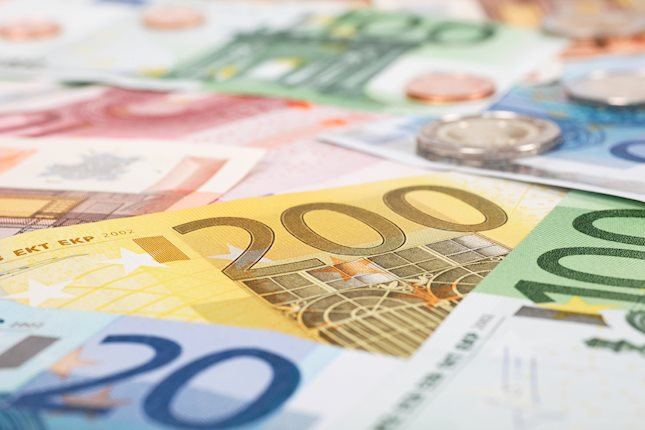- NZD/USD makes a partial recovery in the minutes after the release of US Retail Sales data for May.
- The data shows sales were lower than expected, and that preliminary estimates for April were over optimistic.
- The New Zealand Dollar trades on the back foot amidst weaker services data and GDP.
NZD/USD recovers almost a quarter of a percent to trade in the 0.6110s after the US Dollar (USD) softens, following the release of monthly US Retail Sales data, which shows shoppers tightened their belts in both April and May.
Retail Sales rose 0.1% month-over-month in May but fell below the 0.2% forecast by economists. April’s flat reading, meanwhile, was revised down to a negative 0.2%, according to data from the US Census Bureau, released on Tuesday.
Retail Sales ex Autos, declined 0.2% MoM – falling below the 0.2% consensus estimate and the downwardly revised 0.1% decline in April. The April figure itself was revised down from a positive 0.2% preliminary reading.
Both the lower-than-expected readings for May and the downward revisions for April weighed on the US Dollar (USD), but lifted NZD/USD, which measures the buying power of a New Zealand Dollar (NZD) in terms of USD. The data indicates a slowdown in consumer spending in the US which will probably filter through to lower inflation, and lower interest rates. Lower interest rates negatively impact currencies as they reduce foreign capital inflows.
Market expectations of the future course of US interest rates were revised down following the release. Prior to the release the probability of the Federal Reserve (Fed) making a 0.25% rate cut in September was 55%. After the release this increased to 60%, according to the CME FedWatch Tool, which uses the price of 30-day Fed Funds Futures to calculate its estimates. The probability that interest rates will fall by either 0.25% or 0.50% by September, meanwhile, rose to nearly 68%.
The increased probabilities suggest the Fed could cut interest rates more than once in 2024. This comes despite the bank’s last set of forecasts in June penciling in only one 0.25% rate cut before year end. The hawkish forecast (of the view that interest rates will remain high) has been behind the USD’s appreciation over recent sessions and NZD/USD’s weakness.
Recent commentary from Fed officials has backed the bank’s hawkish stance. Minneapolis Fed President Neel Kashkari said on Sunday that he thought it a “reasonable prediction” that the Fed would reduce interest rates only once this year. On Monday, Philadelphia Fed President Patrick Harker added further support to the view after he said that keeping rates where they were for a bit longer would help get inflation down and mitigate upside risks.
The New Zealand Dollar, meanwhile, trades broadly weaker after data showed the New Zealand’s services sector slumped in May, hitting the lowest level since August 2021. In addition, GDP data for the country has shown two consecutive quarters of negative growth, meeting the definition of a recession. This, in turn, has increased bets the Reserve Bank of New Zealand (RBNZ) will cut interest rates in the near-term, with a 0.25% cut now fully priced in for the November meeting, according to Trading Economics.
Information on these pages contains forward-looking statements that involve risks and uncertainties. Markets and instruments profiled on this page are for informational purposes only and should not in any way come across as a recommendation to buy or sell in these assets. You should do your own thorough research before making any investment decisions. FXStreet does not in any way guarantee that this information is free from mistakes, errors, or material misstatements. It also does not guarantee that this information is of a timely nature. Investing in Open Markets involves a great deal of risk, including the loss of all or a portion of your investment, as well as emotional distress. All risks, losses and costs associated with investing, including total loss of principal, are your responsibility. The views and opinions expressed in this article are those of the authors and do not necessarily reflect the official policy or position of FXStreet nor its advertisers. The author will not be held responsible for information that is found at the end of links posted on this page.
If not otherwise explicitly mentioned in the body of the article, at the time of writing, the author has no position in any stock mentioned in this article and no business relationship with any company mentioned. The author has not received compensation for writing this article, other than from FXStreet.
FXStreet and the author do not provide personalized recommendations. The author makes no representations as to the accuracy, completeness, or suitability of this information. FXStreet and the author will not be liable for any errors, omissions or any losses, injuries or damages arising from this information and its display or use. Errors and omissions excepted.
The author and FXStreet are not registered investment advisors and nothing in this article is intended to be investment advice.
Recommended content
Editors’ Picks

EUR/USD stabilizes near 1.0550, looks to post weekly gains
EUR/USD continues to fluctuate in a tight channel at around 1.0550 in the American session on Friday as trading action remains subdued with US financial markets heading into the weekend early. The pair looks to end the week in positive territory.

GBP/USD loses traction, retreats below 1.2700
After climbing to its highest level in over two weeks at 1.2750, GBP/USD reverses direction and declines to the 1.2700 area on Friday. In the absence of fundamental drivers, investors refrain from taking large positions. Nevertheless, the pair looks to snap an eight-week losing streak.

Gold pulls away from daily highs, holds near $2,650
Gold retreats from the daily high it set above $2,660 but manages to stay afloat in positive territory at around $2,650, with the benchmark 10-year US Treasury bond yield losing more than 1% on the day. Despite Friday's rebound, XAU/USD is set to register losses for the week.

Bitcoin attempts for the $100K mark
Bitcoin (BTC) price extends its recovery and nears the $100K mark on Friday after facing a healthy correction this week. Ethereum (ETH) and Ripple (XRP) closed above their key resistance levels, indicating a rally in the upcoming days.

Eurozone PMI sounds the alarm about growth once more
The composite PMI dropped from 50 to 48.1, once more stressing growth concerns for the eurozone. Hard data has actually come in better than expected recently – so ahead of the December meeting, the ECB has to figure out whether this is the PMI crying wolf or whether it should take this signal seriously. We think it’s the latter.

Best Forex Brokers with Low Spreads
VERIFIED Low spreads are crucial for reducing trading costs. Explore top Forex brokers offering competitive spreads and high leverage. Compare options for EUR/USD, GBP/USD, USD/JPY, and Gold.